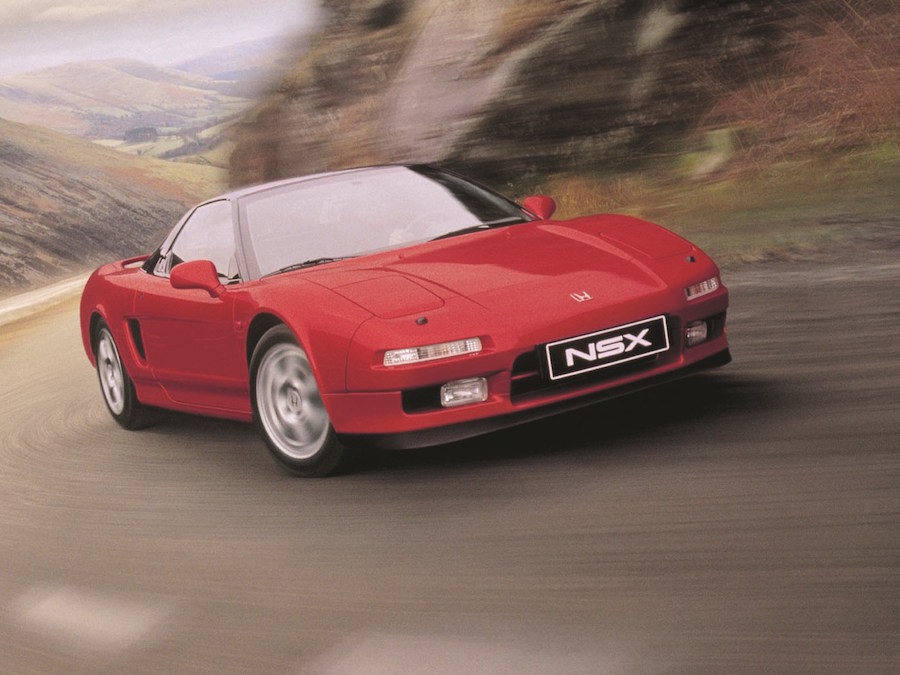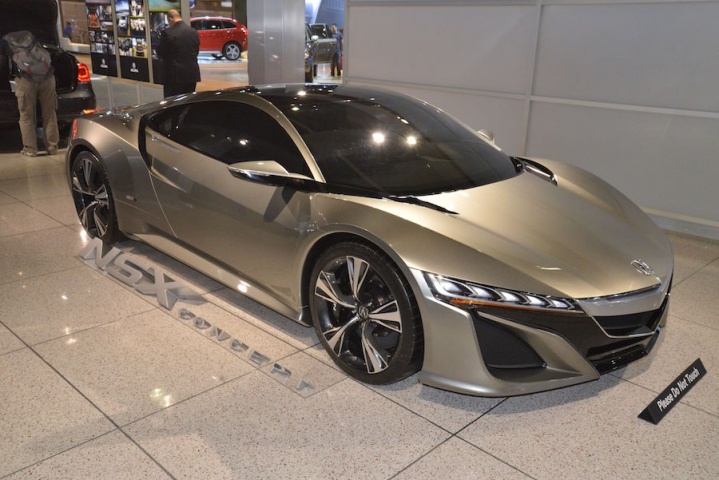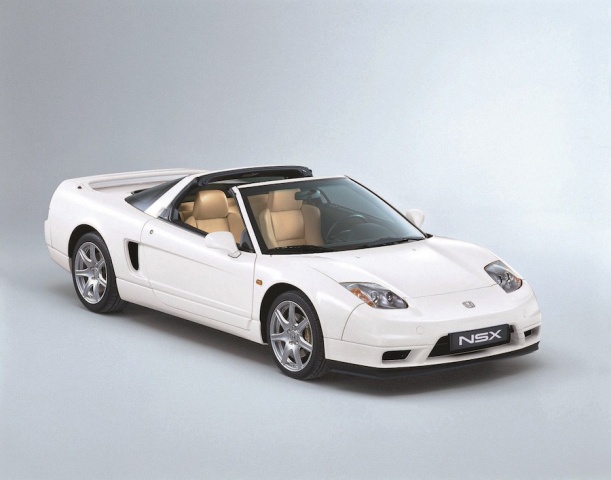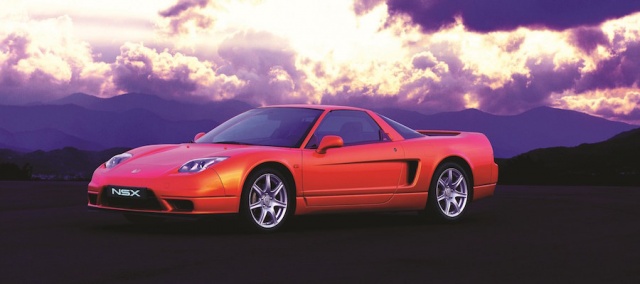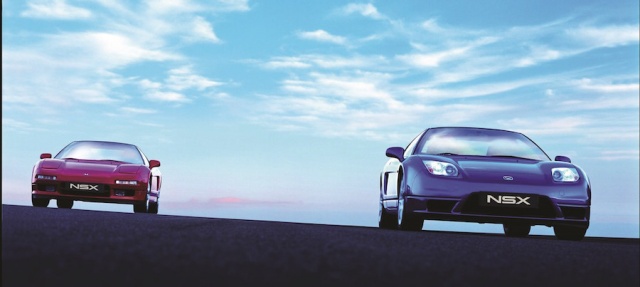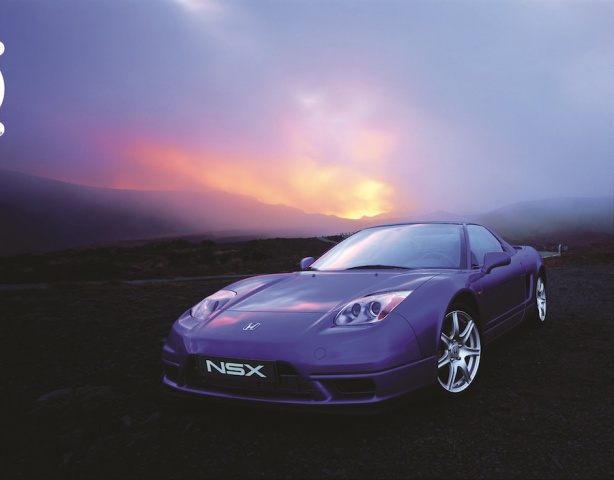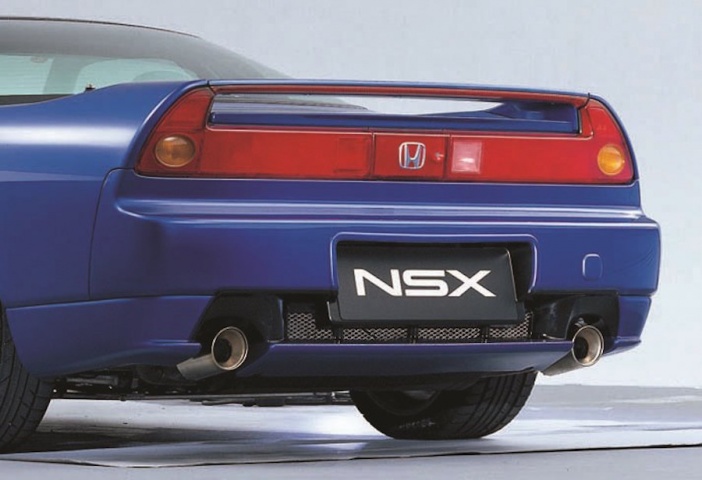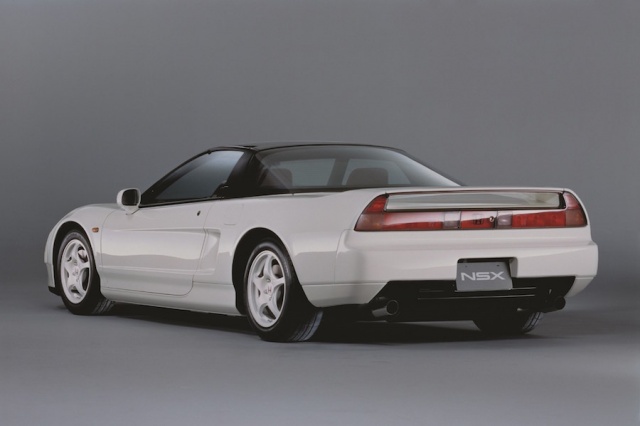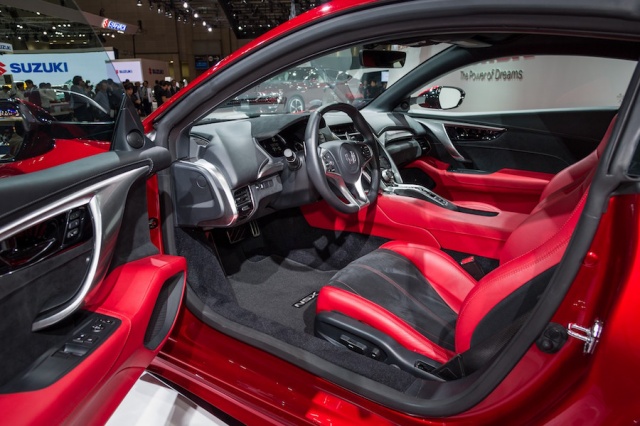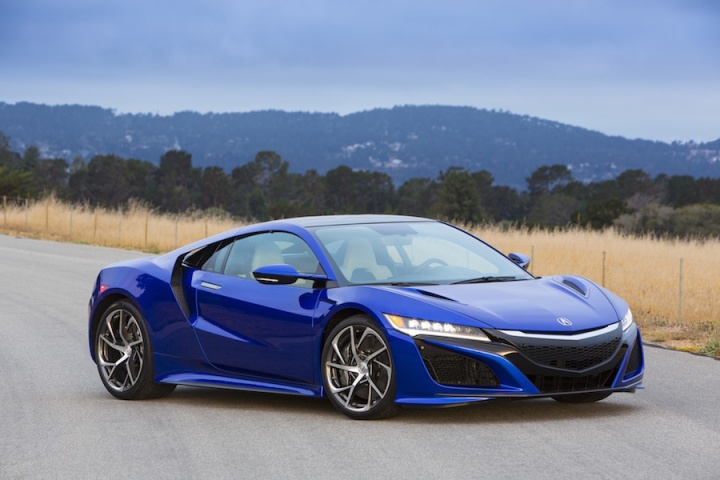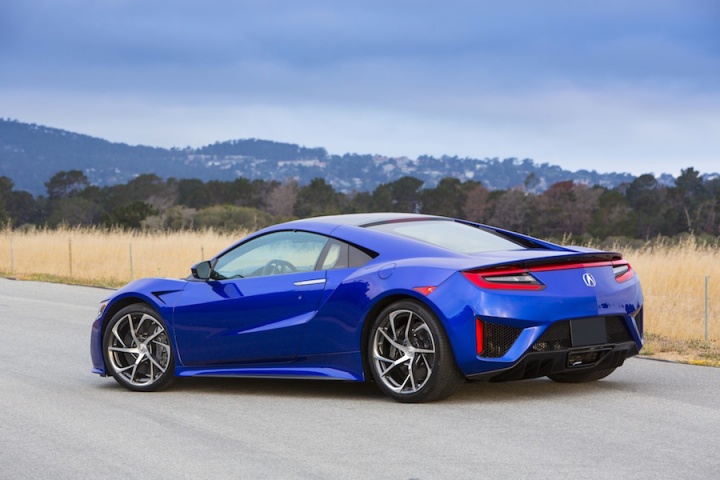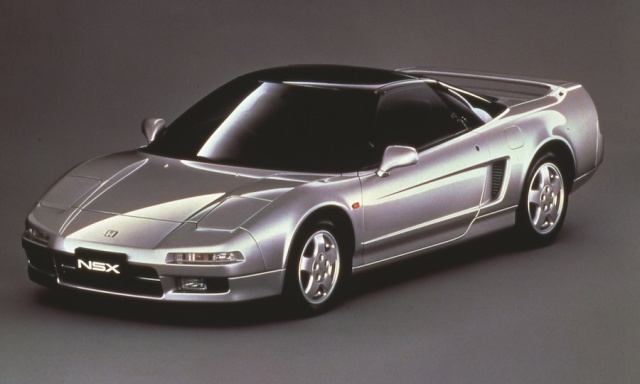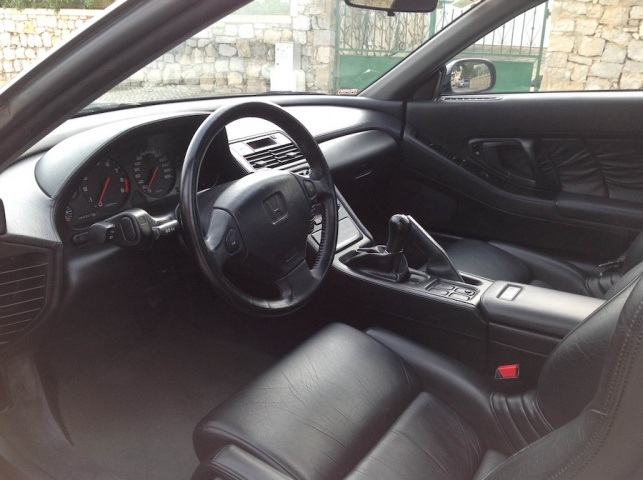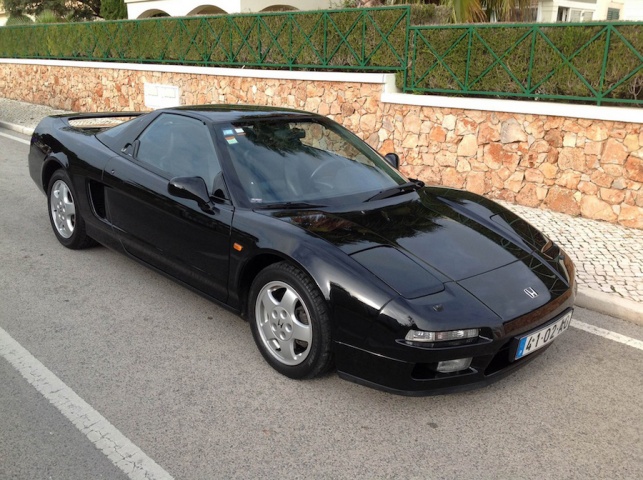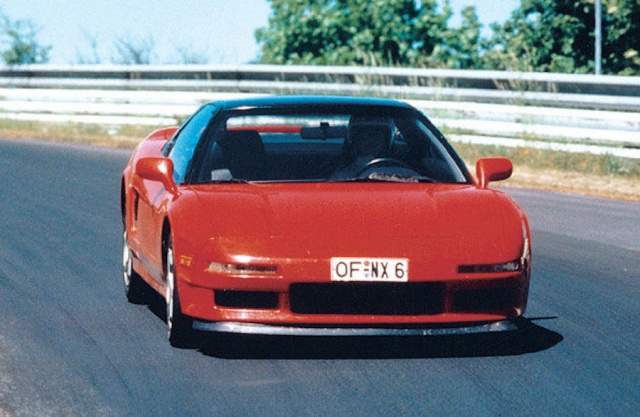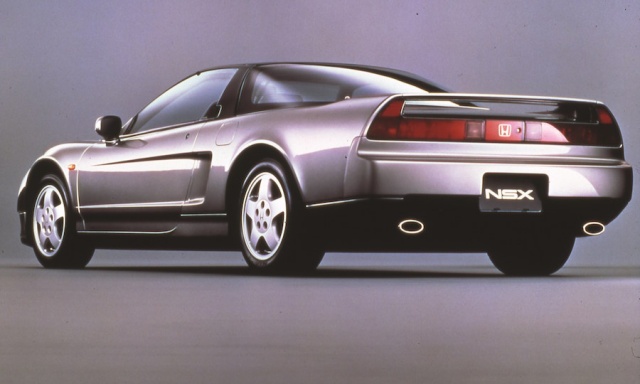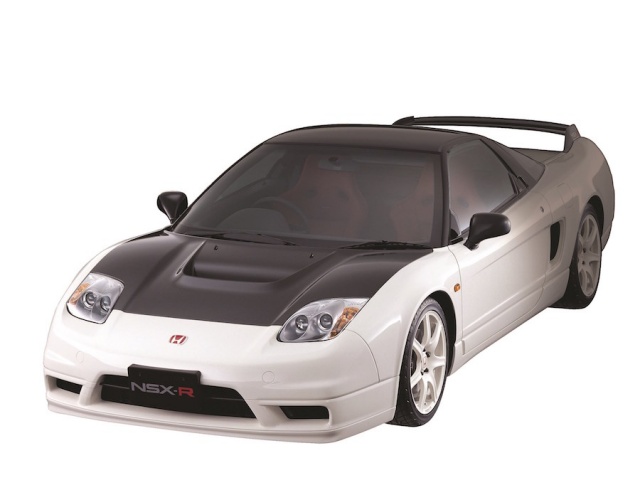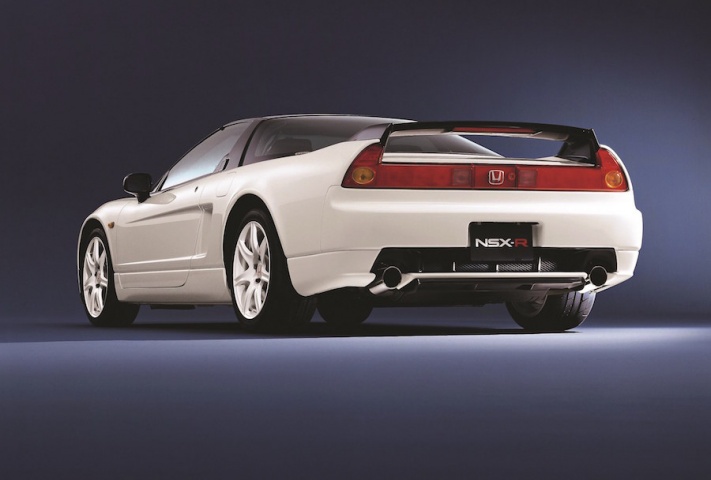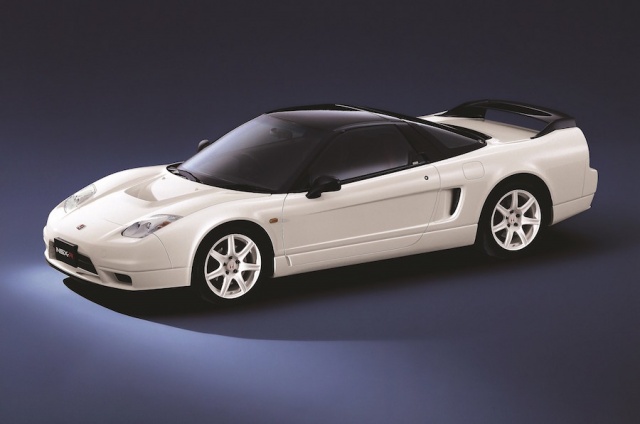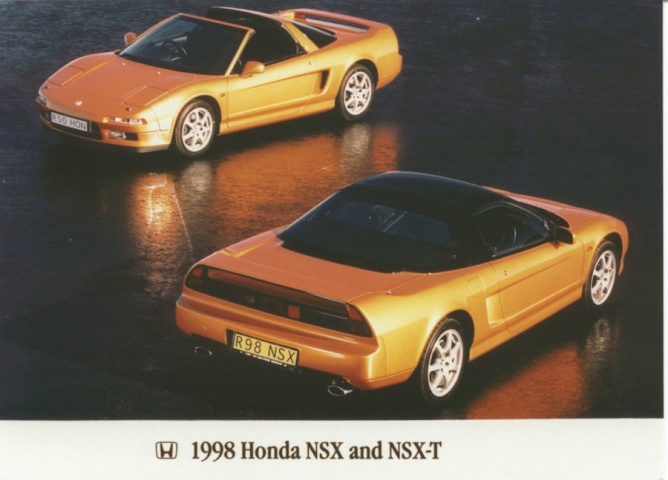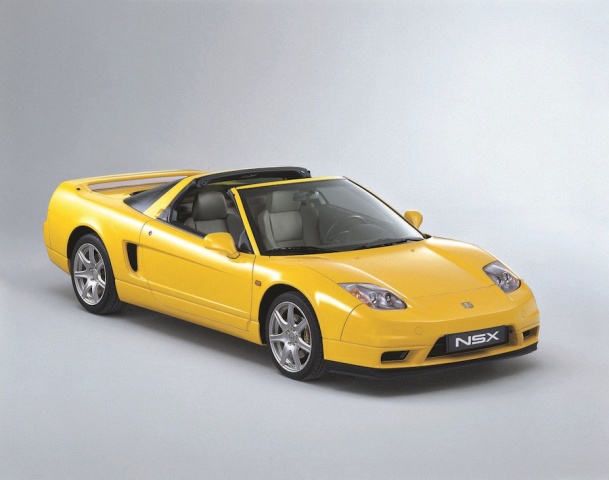With the all-new model finally on the way, we look back at Japan's original and only true supercar, the Honda NSX.
That's a bold claim we've made above, isn't it? That Honda's NSX is Japan's only true supercar. We can almost hear fans of the Nissan GT-R (R35) and Lexus LFA firing up their email and penning strongly-worded missives, accusing us of having lost the plot.
But allow us to explain. There remains a mystique around Honda's NSX that no amount of turbochargers, cylinders or brazen horsepower can match; a mystique, as we'll come to elaborate on, that largely revolves around a Brazilian Formula 1 legend. And, strictly speaking, a supercar should be made of exotic materials, have an engine like no other within the manufacturer's range and it must be mid-engined and rear-wheel drive. As stunning and utterly brilliant as the GT-R and LFA are, the Nissan only fulfils the first two prerequisites and the Lexus' engine is in its nose.
Thus, Toyota MR-2 aside (come on; a supercar?!), the NSX is the sole bona fide exotic to come from Japan. And what a supercar it is. Built between 1990 and 2005, this aluminium Honda was a game-changer, bringing with it a number of firsts to the automotive industry that are widely adopted today. That metal, for instance, had never been as widely used in a car before as it was in the NSX. It was the first production model to feature an all-aluminium monocoque and it even used the lightweight material in the original 3.0-litre V6 engine and its suspension.
It was one of the very earliest pioneers of Honda's invention, Variable Valve Timing and Electronic Lift Control. You'll know this technology as VTEC, although pretty much every other car maker in the world has come up with its own take: a few examples are Toyota's VVT-i, BMW's Valvetronic and Ford's Ti-VCT. The NSX was also - and this one is subjective rather than factual, we grant you - the first truly useable supercar. It was designed to be scintillating and ballistic when driven flat out, yet utterly docile and refined when pottering about town. Try that in a Ferrari 348 and see where it gets you.
It's worth pointing out that rather than being a random assemblage of letters, NSX actually means something: New Sportscar eXperimental. It was an idea that was gestated as early as 1984 and the Honda Pininfarina eXperimental (HP-X), but when Honda's management told the engineers behind that project that it would have to match the finest contemporary performance cars from Germany and Italy, the 2.0-litre V6 of the HP-X was junked and the development car took on the appellation NS-X. When the green light was finally given for production, all that the fastest Honda's name lost in the transition to showroom was the hyphen.
And that Brazilian F1 icon? None other than Ayrton Senna da Silva, the three-time F1 world champion tragically taken from the world in 1994, but widely regarded to be the finest racing driver who has ever lived. Of course, precisely how much input Senna had in developing the NSX has become the stuff of almost urban legend: some say he set the car up, others scoff and purport that he probably drove an NSX once and said it was 'quite good'. The accepted intelligence on this subject today is that he drove pre-production versions on track a number of times (at such hallowed venues as Suzuka and the Nürburgring) and told the Honda engineers how they could stiffen the car's chassis to good effect. Honda, being a sensible and respectful Japanese company, duly did the right thing and adopted his suggestions into the final production car. That sort of legendary input is something most other automotive companies can only dream of.
Let's just quickly recap the Honda's model history. It was launched in 1990 with a 3.0-litre V6 mid-mounted petrol engine and a five-speed manual gearbox, driving the rear wheels. Its 'cab-forward' stance was inspired by the all-round excellent visibility of the General Dynamics F-16 Fighting Falcon, while the long, elegant tail was designed to improve the car's high-speed stability - although, benign as they are, get an NSX wildly out of shape and you'll need Senna's driving talent just to recover it. An F-Matic four-speed auto was also offered, before - in 1995 - the targa body style was introduced for the NSX-T; a small panel in the roof was removable for open-air motoring.
The next big change came in 1997, when the C30A V6 was replaced by the 3.2-litre C32B V6 engine. The manual gearbox went up to six speeds, although the F-Matic auto had to stick with the old 3.0-litre engine. Then, in 2002, the easiest visual identifier was brought in, as the glorious pop-up headlamps of the original had to make way for faired-in units. Brilliantly, Honda tried to claim a dynamic benefit, in that these new headlights were lighter over the nose than the pop-ups and thus reduced understeer. The reality was sadly far more pragmatic: pedestrian safety legislation, specifically in the US, killed off all automotive pop-ups for good.
That 2002 visual overhaul also saw 17-inch wheels added to the front axle as well as the back, while the rear tyres became fatter and the styling was tweaked - the exhaust tips were more neatly integrated with the bumper, while the light clusters were modified with oval indicators. Alongside the regular range were some lightweight specials, some found only in Japan and others exported globally: NSXs such as the Type S and Type S Zero; the two stripped back iterations of NSX-R ('92-'95 for v1.0, '02-'05 for v2.0); and the ultra-rare (just five were built), ultra-expensive NSX-R GT, based on the second Type R NSX and made purely for Japanese GT Championship (JGTC) homologation purposes.
Horsepower has always been a tricky issue with the Honda. Officially, the first 3.0-litre cars had 274hp, while the F-Matic autos were detuned to 260hp and thus had a 0-100km/h time of 7.5 seconds - nothing like supercar pace, even in the 1990s. Honda itself claims the 3.2 has 294hp, but there used to be a bizarre Japanese 'gentleman's agreement' that meant no manufacturer could quote more than 280hp for an engine; indeed, even Honda UK, the company that owns the car we drove for this piece, quotes this last-of-the-line 2005 manual as having 280hp. But here's where we revert to the anecdotal. A lot of owners' club talk around the NSX states that, when they were on the rolling-road, even early cars made considerably more than 280hp. And as Honda was more than capable of getting 120hp-per-litre out of the normally aspirated S2000 2.0-litre engine in 1999, the idea of it only being able to eke 87.5hp-per-litre from a mega V6 like this is laughable.
With so much conjecture and intrigue surrounding the NSX, it's little wonder it has evolved over time to become a genuine modern classic, with its underwhelming sales figures quickly forgotten.
But why are we exulting over a car that has been out of production for a decade? Well, for Hondamentalists like us, there has been a litany of false dawns when it comes to the replacement. The 3.5-litre V6-powered HSC was shown as far back as 2003, but came to naught. Then there was the HSV-010 of 2010, a V10 monster that was built purely for JGTC racing but for which rumours of a road-going NSX replacement never quite went away.
Yet, after ten years of frustration waiting for the second-generation NSX, in 2016 it will finally arrive. The new version is once again a V6, mid-mounted petrol-engined supercar - but there the similarities end. For a start, that 3.5-litre unit is now twin-turbocharged, while the lightweight body is made not of aluminium but carbon fibre. And as is befitting of these ecologically conscious times, the new NSX will be a hybrid, sporting three electric motors to supplement the combustion engine. The Honda will also have four-wheel drive with a nine-speed dual-clutch transmission, and the styling is all edgy and angular, where the original was sleek and beautiful. OK, 550hp in the new NSX is not to be sniffed at, but the big question is: can it ever hope to match up to the original?
To that end, we politely asked Honda in the UK if we could borrow the glorious heritage example of a 2005 3.2 manual coupé; perhaps the ideal specification of NSX, especially in the stunning colour of Imola Orange Pearl. Time has not dulled the NSX's supercar stance and it remains an imposing machine - long, wide and low, oh so very low. In fact, at just 1,170mm tall, the Honda is just six inches higher than the car famously named for its ridiculously low height: the Ford GT40. Yes, that's right; a road-going Honda that's almost as sleek as a genuine Le Mans winner. Presence is not something the NSX lacks.
Its interior leaves plenty to be desired, though, given that even this 2005 car has cabin architecture that dates back to the year demolition work on the Berlin Wall officially started, Nelson Mandela was freed from prison and the Hubble Space Telescope was launched. Despite the driver's seat being extremely low compared to the world outside, the chair is bizarrely high-mounted relative to the car, meaning even a moderately tall driver will find their head brushing the roof-lining.
The dials are old-hat, there's some utterly bizarre switchgear on the steering column and aside from cruise control, leather seats and air conditioning, the NSX is bereft of many of the sort of toys that you'd have found on mid-level Audi saloons in 2005. However, if you can get the reach-adjustable only steering wheel just so, the driving position proves to be quite comfortable, while the seats don't introduce any aches and pains on longer trips. And you really can see out more clearly than you could ever hope to in anything Italian.
Fire the NSX's engine up and it churns over to the industrial coughing of a heavy-duty starter motor. There's no delicacy to this noise, but once idling the V6 sounds gravelly and full of intent. And on the move, the old cliché about the NSX being as easy to drive as a Civic is borne out within a few yards. The throttle response is judged to perfection, the engine murmurs away and never chunters about low-speed manoeuvring and the light steering proves to be a boon. The ride's impressive too, given how close to the road surface your backside is. It's also another belter of a Honda manual gearshift, slick, accurate and delightfully mechanical in throw.
Up the pace on the motorway or dual carriageways and the Honda still feels at home, although tyre roar and wind noise become more marked. But already the hairs on the nape of your neck start prickling. Without sending the tacho anywhere near the 5,000rpm VTEC change point, the NSX is already clearing its throat with a wonderful, metallic bark emanating from behind your head between 2,500- and 4,000rpm.
And then the road ahead of you clears, and you pin it through second, third and into fourth. For a diehard Honda fan, it's a seminal moment, almost enough to bring you to tears of joy. Everything, absolutely everything you've heard about the NSX's sheer brilliance crystallises the instant that high-revs-profile cam slots into place and the Honda V6 gives you everything. The noise is simply sensational - unfettered by artificiality, it screams past the 7,300rpm peak power point and towards the 8,000rpm limiter in a glorious surge of power. If this car has only 280hp, we'll eat our hats; the way it hauls speed so ferociously in the lower gears speaks of at least 340hp, maybe more.
And yet straight-line pace is not the Honda's only trick, as the whole car feels perfectly engineered around that sublime V6. There are many cars where the engine is by far and away the star, but in the NSX the 3.2-litre unit, while magnificent, is merely part of a stunningly cohesive whole. The chassis is so balanced and neutral, the steering weights up and offers masses of feel, the brakes - so often the let-down on an older car - bite strongly and cleanly every single time and body roll simply isn't an issue. The result is a car that can cover ground in a devastating and immensely enjoyable fashion, and yet the NSX also commands respect and requires actual driving to get the best from it.
This rampant schizophrenia, between the compliant city car and the rabid open-road destroyer, is what marks the NSX out as an all-time great. Only the Audi R8, launched a year after the NSX had finally slipped out of production, comes close to matching this mid-engined, everyday supercar formula. There's really nothing else like it out there, and when you meet one of your heroes and they not only match but surpass your exalted expectations, it is a genuinely life-affirming moment.
So there you have it: mystery, near-incredible F1 credentials and a master-of-all-trades character are what define Japan's only supercar. If the new NSX can achieve just half of what the original was capable of, it's sure to be a glorious success.

